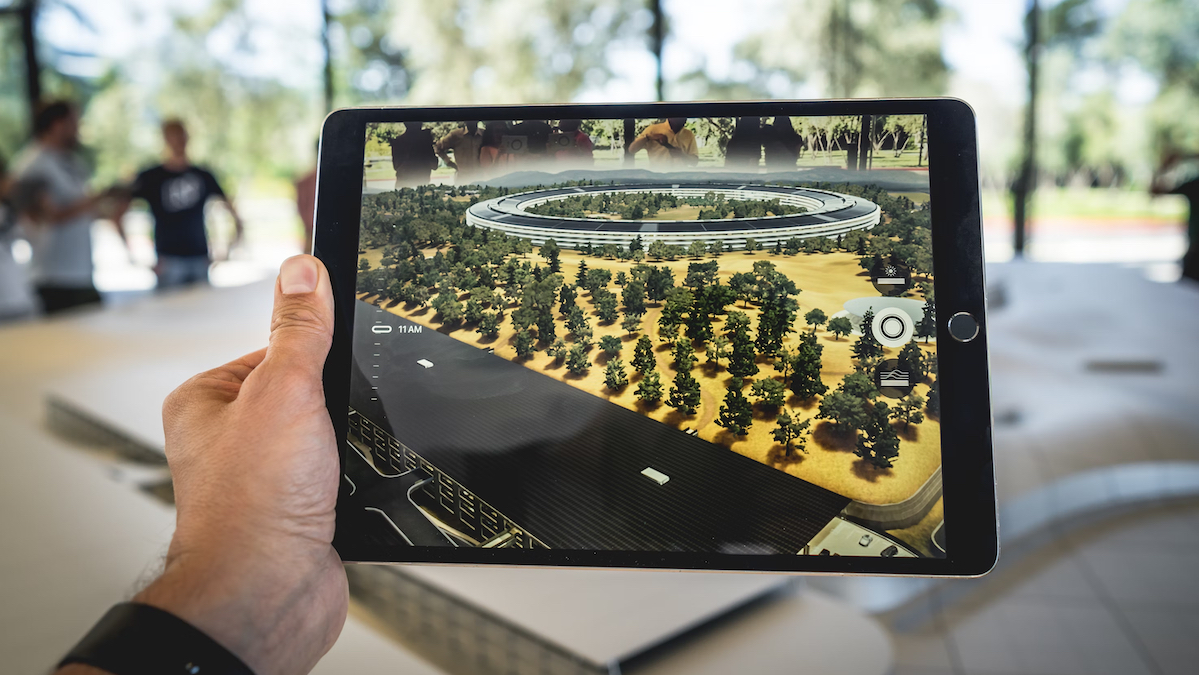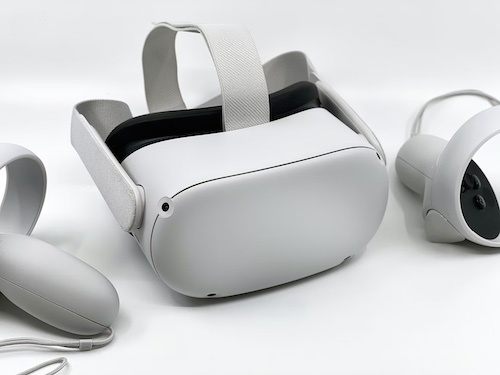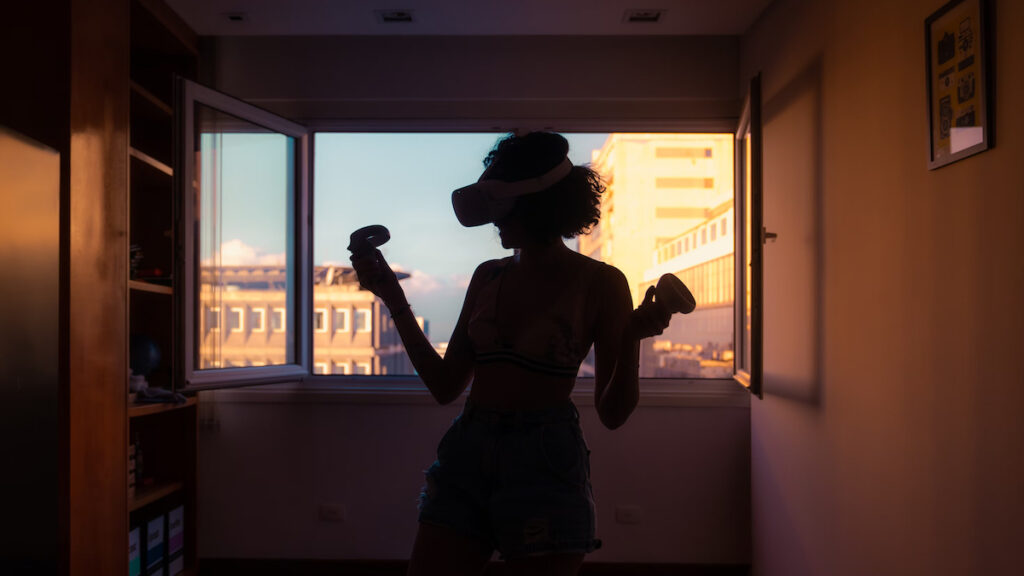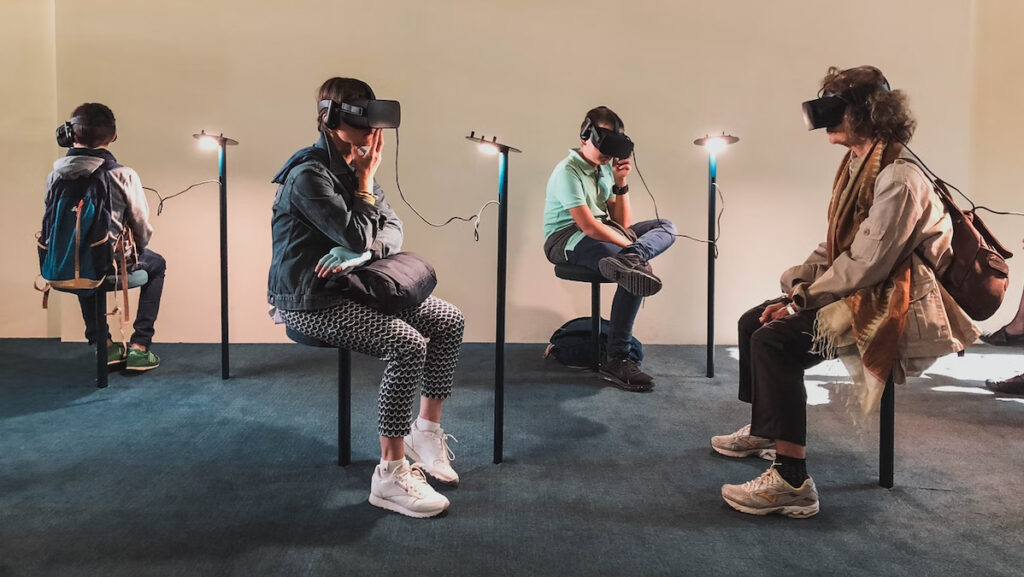
See How Virtual Reality Is Making Metaverse A Reality?
Tags: augmented reality • blockchain technology • Metaverse • metaverse development • metaverse development company • metaverse development tools • virtual reality • VR/AR
Today’s world is changing as a result of technological innovations. Companies such as Oculus, Sony, and Microsoft are in a bullish mode in order to seize VR-enabled Metaverse application platforms for their customers.
Intro – The Metaverse Explained
Try understanding metaverse as a virtual reality-based blockchain application platform that allows users to interact with each other in a virtual world. It is similar to the physical world, but it is entirely digital.
The Metaverse Network is an open-source platform built on top of Ethereum. It allows users to create their own decentralized applications (DApps) and digital assets (NFTs).
The virtual reality (VR) industry is currently in a state of flux. While there are a number of established VR platforms, the future of the VR industry is still very much up in the air. This is largely due to the fact that the technology and metaverse development tools required to create truly immersive VR experiences is still developing and being explored.
That said, there are a number of companies and organizations working on VR-enabled Metaverse application platforms. These platforms are designed to provide users with a more realistic and 3D interactive VR/AR experience.
In many cases, these platforms will be open-source, which will allow developers to create their own applications and games.
One of the most promising VR-enabled Metaverse platforms is Scape Technologies’ ScapeXR. ScapeXR is an all-in-one platform that includes both hardware and software components. The platform’s hardware consists of a high-end PC, a head-mounted display (HMD), and controllers. The software component features a number of tools and APIs that developers can use to create interactive VR experiences.
ScapeXR is just one example of a VR-enabled Metaverse application platform. There are sure to be many more in the making by blockchain application development companies in the coming years.
Why Metaverse?
The Metaverse can be used for many different purposes, such as social networking, gaming, education, training, launching fashion shows, events, and more. It provides a unique and immersive experience that is not possible in the physical world.
There are already several Metaverse platforms in existence, such as Second Life and Linden Lab’s Sansar. However, these platforms are limited in scope and do not yet offer the full range of 3D immersive experiences that a Metaverse should offer.
The future of the Metaverse lies in VR-enabled application platforms that offer a full range of experiences and allow users to interact with each other in a realistic way developed using metaverse development tools.
These platforms will provide an immersive and realistic experience that is unlike anything that exists in the physical world.
Defining VR-Enabled Metaverse Application Platforms
A VR-enabled Metaverse application platform can be defined as that allows users to create, view, and interact with three-dimensional virtual environments.

There are many potential applications for VR-enabled Metaverse application platforms. For example, businesses could use them for training employees, marketing products, launching an event such as fashionshows.
One of the most popular ways to experience a VR-enabled Metaverse application platform is through a gaming headset such as the Facebook’s Oculus Rift or HTC Vive. However, it is also possible to view VR content on a regular computer screen or even a smartphone.
There are a number of different VR-enabled Metaverse application platforms currently in development. Some of the most notable ones include High Fidelity, JanusVR, and vTime.
It is still early days for VR-enabled Metaverse application platforms. However, it is clear that they have a lot of potentials and could eventually become mainstream.
Pros And Cons Of Virtual Reality

As technology advances, the potential for virtual reality (VR) and augmented reality (AR) to change the way we interact with computers is becoming more and more apparent. While many applications for VR/AR are still in development, one area that is gaining traction is the use of VR for metaverse applications development.
Metaverse applications are digital platforms that allow users to interact with each other in a virtual world. The most well-known example of a metaverse application is Second Life. In a metaverse, users can create and inhabit avatars, participate in activities, and purchase virtual goods.

There are pros and cons to using VR for metaverse applications. One of the biggest pros is that VR can provide a more immersive experience for users than traditional 2D screens. When users put on a virtual reality headset, they are transported into the digital world. They may interact with it far more naturally than if they were gazing at a screen. This can result in a more engaging and fun experience for users.
Another pro is that VR can be used to make metaverse applications more accessible to people with disabilities. For example, people who are deaf or hard of hearing can use VR to lip-read avatar dialogue in a metaverse. People
Current Trends Of VR/AR Applied To Game Development

There’s no doubt that virtual reality (VR) and augmented reality (AR) is the future of gaming. We’re already seeing major game developers like Valve, Ubisoft, and Microsoft invest heavily in these technologies, and it’s only going to become more commonplace in the years to come.
One of the most exciting things about VR/AR is the potential for so-called “metaverse” applications. These are platforms that allow users to interact with each other in a virtual space, similar to something like Second Life or Habbo Hotel.
We’re still in the early days of VR/AR development, but there are already a few companies working on metaverse platforms. Facebook’s Oculus Rift, for example, will have an application called Social VR that will let users meet up and interact with each other in a virtual space.
It’s also worth noting that several major game engines now support VR/AR development, including Unity3D and Unreal Engine 4. This means that it’s easier than ever for metaverse application developers to create great-looking VR/AR metaverse platforms and games.
Future Of Metaverse Applications

So what does the future hold for VR/AR metaverse applications? It’s hard to say for sure, but it seems likely that we’ll see:
Potential Future Of VR/AR Applied To Game Development Platforms
With the debut of the Oculus Quest and other All-In-One VR headsets, it has become easier than ever for consumers to get into virtual reality. And as VR technology continues to advance, we’re starting to see more and more applications for it beyond just gaming.
One of the most exciting potentials uses for VR is in the development of metaverse platforms. A metaverse is a 3D immersive virtual world that allows users to interact with each other and with digital content in a realistic way.
Think of it as a cross but better between the virtual world of Second Life and the massively multiplayer online role-playing game (MMORPG) World of Warcraft (WoW).
There are already a few metaverse platforms in development, such as High Fidelity and Decentraland. But with the power of VR, we could see these platforms become even more realistic and immersive.
Imagine being able to wander around a city you’ve developed in Decentraland, or exploring a virtual environment designed by another user.
The possibilities for VR-enabled metaverse platforms are endless. And as VR technology continues to evolve, we can only imagine what kinds of metaverse platform experiences will be possible in the future.
 Previous Post
Previous Post Next Post
Next Post
